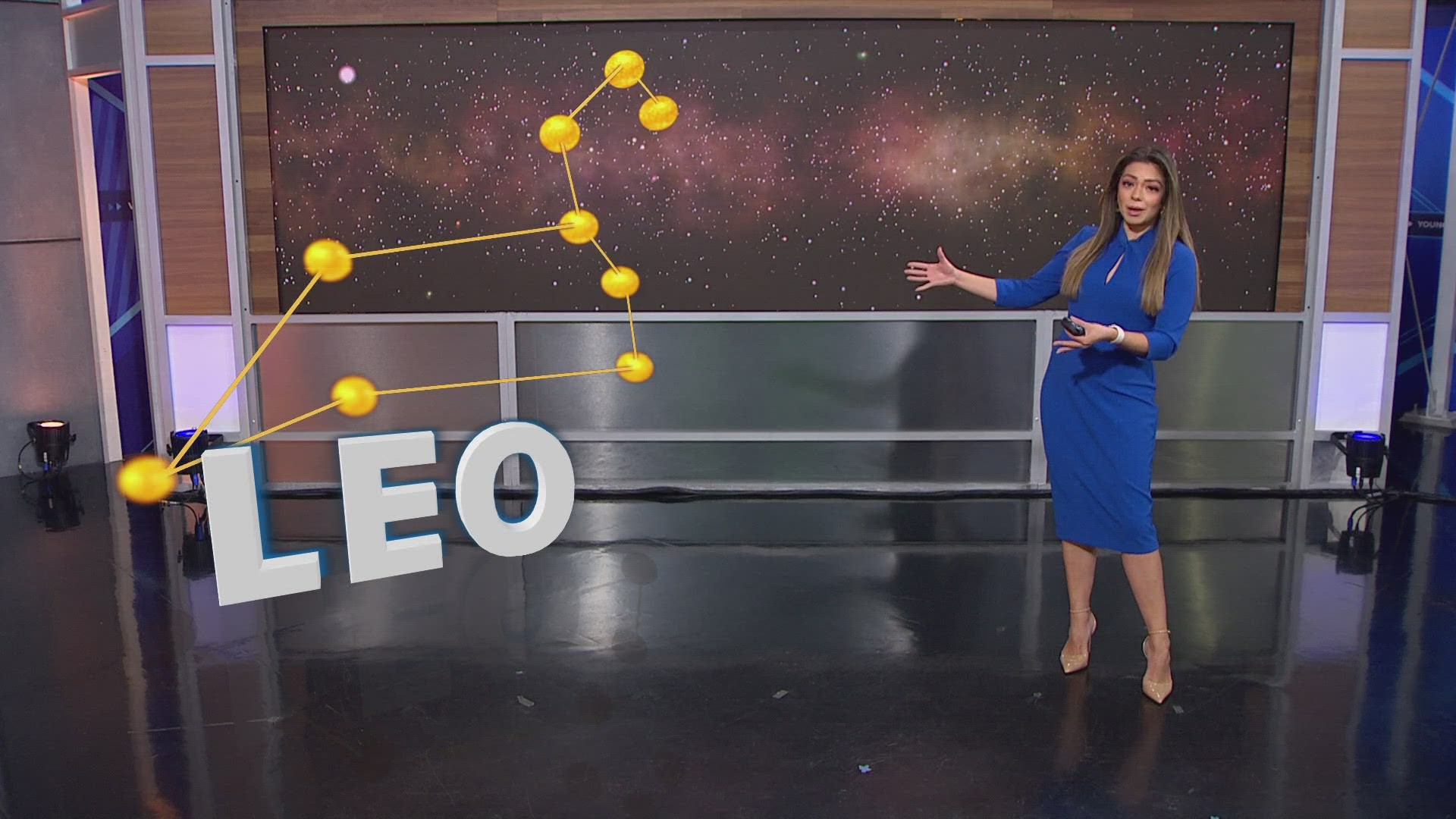WASHINGTON — It's November, meaning the air is crisp, the leaves are falling, and the Leonid meteor shower is about to peak across the night sky.
According to EarthSky, the Leonids will peak in the early morning hours of Saturday, Nov. 18, 2023. The moon will be less than a quarter full, making it unlikely to steal the show. It's considered one of the best meteor showers of autumn, providing skywatchers a great opportunity to spot some shooting stars ahead of the long, but frigid, winter nights that are right around the corner.
NASA says the Leonids produce a peak of about 15 bright, fast and colorful meteors per hour. The shower is known for fireballs and "Earth-grazer meteors," which streak close to the horizon and have long, colorful tails. And very occasionally, watchers get an incredible show.
"Every 33 years, or so, viewers on Earth may experience a Leonid storm that can peak with hundreds to thousands of meteors seen per hour depending on the location of the observer," NASA's website explains. The last time this happened was about 20 years ago, in 2002.
When is the Leonid Meteor Shower?
Technically, the Leonids have already begun their fiery display across the night sky. The meteors first appeared this year on the night of Nov. 6 and are expected to last until early December.
But the expected peak of the celestial show will be this weekend, on the evening of Friday, Nov. 17, into the early morning hours of Saturday, Nov. 18.
Where can I watch the meteor shower?
NASA suggests going outside around midnight to get the best view, and to get as far away from city lights as possible, because light pollution can prevent you from seeing the stars.
Luckily, the meteors are visible in both the northern and southern hemispheres, so you should be able to spot them from anywhere in the U.S. if you look up at the right time.
You'll want to look east, towards where the sun rises. And be patient. It may take up to 30 minutes for your eyes to fully adjust to the dark, at which point you should be able to see any shooting stars that fly by. And you'll have plenty of time, because the show lasts until dawn.


How many shooting stars will there be?
The Leonid Meteor Shower sometimes produces a meteor storm that can produce thousands of shooting stars per hour. Unfortunately, it's unlikely that will happen this year.
Space.com explains that the 2023 shower will probably be weak, with long stretches where no meteors can be seen.
And even when they do flash across the night sky, if you lose focus for even a second you might miss them.
NASA says the Leonids are incredibly fast, moving at a rate of around 44 miles per second (or 158,400 mph). They're considered to be some of the fastest meteors visible from earth.

